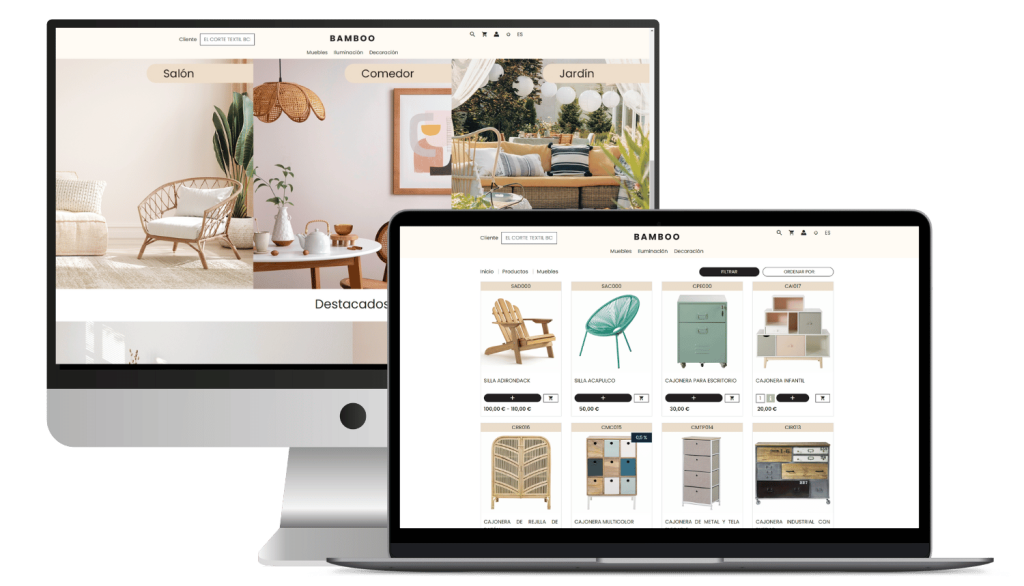Discover what the Canvas model is for and how you can implement it in your ecommerce
In the world of ecommerce, strategic planning is key to ensure the success of any business. One of the most effective tools to achieve a clear and concise vision of your ecommerce is the Canvas model. In this article, we will explain how you can apply this model to your ecommerce. If you are looking to optimize your online store and obtain measurable results, this article will be of great help to you.

What is the Canvas model?
The Canvas model is a strategic management tool that allows companies to visualize in a simple and clear way how all aspects of their business work. It was developed by Alexander Osterwalder and is widely used to design, describe, challenge and innovate business models.
This model is composed of nine building blocks that together provide a comprehensive view of how a company operates. These blocks help entrepreneurs and companies understand how they generate value and how they can improve their offering based on key performance indicators (KPIs).
The 9 blocks of the Canvas model
- Customer segments: Define who your customers are and who your ecommerce is aimed at. Understanding their needs will help you offer them products they really want to buy.
- Value proposition What does your ecommerce offer that makes it unique? The value proposition is what differentiates you from the competition and is crucial to attract and retain customers.
- Channels: These are the means by which you deliver your product or service to customers. In the world of ecommerce, digital channels are essential to deliver your value proposition.
- Relationship with customers: Define how you interact with your customers, from customer service to loyalty campaigns. KPIs can measure the success of these relationships.
- Sources of income: Here you establish the ways in which your ecommerce will generate revenue. This can include direct sales, subscriptions, among other ways.
- Key resources: These are the assets needed to make your ecommerce work, such as your technology platform, products, and staff.
- Key activities: This block covers the most important tasks you need to perform for your ecommerce to operate successfully. Key activities may include inventory management, customer service and digital marketing.
- Key partners: Who do you partner with to make your business work better? This can include suppliers, distributors or even technology platforms that help you optimize your ecommerce.
- Cost structure: Finally, you must know the costs associated with the operation of your ecommerce, from production costs to distribution costs.


How to implement the Canvas model in your ecommerce
Once you understand the nine building blocks, the next step is to implement the Canvas model in your ecommerce. The key is to analyze each area of your business and adjust it to maximize efficiency and performance. This is where key performance indicators (KPIs) play a fundamental role.
1. Define the KPIs relevant to your ecommerce
Before implementing the Canvas model, it is important to define the key performance indicators that will measure the success of your ecommerce. KPIs are specific metrics that will allow you to evaluate whether you are achieving your goals. Some examples of KPIs for ecommerce include:
- Conversion rate: Measure what percentage of your visitors make a purchase.
- Average order valueThe average value of purchases made on your ecommerce.
- Customer retentionHow many of your customers come back to buy?
2. Use the KPIs to optimize the blocks of the Canvas model.
Once the KPIs have been KPIsYou can use them to optimize each block of the Canvas model. For example, if one of your KPIs is the conversion rate, you can analyze whether your value proposition is aligned with your customers’ needs or whether the channels you use to reach them are the right ones.
3. Adapt your ecommerce strategy according to the results.
The analysis of KPIs will allow you to make real-time adjustments to improve the performance of your ecommerce. If you notice that your relationship with customers is not ideal, you can implement improvements in customer service or customize communications to make them more effective.
4. The importance of constant feedback
One of the keys to success in ecommerce is the ability to adapt. KPIs give you a clear view of what works and what doesn’t, allowing you to make the necessary changes and adjustments to improve your strategy.
Transform your ERP into a powerful B2B ecommerce system

Conclusion
The Canvas model is an invaluable tool for any ecommerce that seeks to have a clear and well-defined strategy. Its implementation, together with the use of key performance indicators (KPIs), will allow you to optimize your business, improve the customer experience and increase your revenue.
At Stoam SaaSWe are committed to helping you implement strategic solutions that maximize your ecommerce performance. If you want more information about our services, please visit our blog o contact us at through our website.
Share:
Related Articles

What is a marketplace? Find out how to get the most out of it
What is a marketplace? Find out how to get the most out of it In today’s digital world, marketplaces have

Business to consumer (B2C): how it works and how it differs from B2B
Business to consumer (B2C): how it works and how it differs from B2B In today’s world, e-commerce and direct business-to-consumer

Alibaba revolutionises B2B commerce with ‘Accio’ – the AI-powered search engine for SMEs
Alibaba revolutionises B2B commerce with ‘Accio’ – the AI-powered search engine for SMEs Share: Tabla de contenidos What is Accio

Examples of market segmentation: How to apply it in different sectors?
Examples of market segmentation: How to apply it in different sectors? In today’s competitive business landscape, market segmentation is more

Omni-channel strategy: How to integrate all channels to improve customer experience
Omni-channel strategy: How to integrate all channels to improve customer experience In a world where consumers use multiple channels to

What are open APIs and their role in SaaS solutions?
What are open APIs and their role in SaaS solutions? Open APIs have transformed the way businesses use software, especially

Analysis of B2B marketplaces: Are they an opportunity or a threat?
Analysis of B2B marketplaces: Are they an opportunity or a threat? B2B marketplaces are transforming the way companies buy and

How to use chatbots in B2B ecommerce to improve conversions
How to use chatbots in B2B ecommerce to improve conversions In the world of ecommerce B2B (Business to Business)shopper expectations

ERP and sustainability: How a system can reduce environmental impact
ERP and sustainability: How a system can reduce environmental impact Sustainability has become a crucial priority in today’s business landscape.
Automate orders with Stoam SaaS b2b ecommerce

